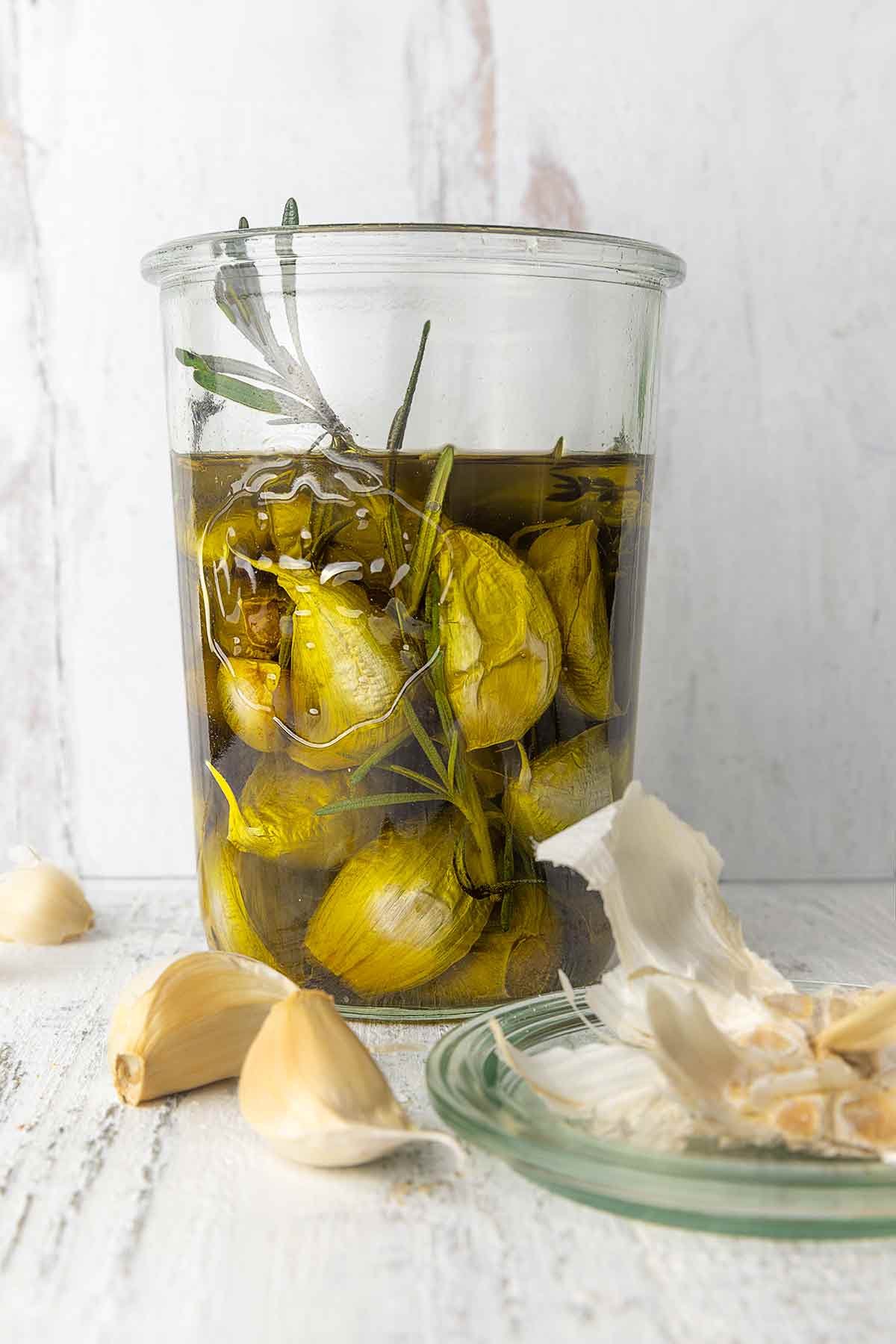
I think you’ll find these sweetly fragrant cloves of garlic confit goodness to be quite irresistible. Some even claim that the tender cloves won’t leave you with bad breath. I can’t promise you that, but I can promise that you may start using them in countless ways. And, when the garlic is gone, save that infused oil for drizzling and dipping and sautéing. Any which way, I think you’ll find these garlic cloves to be pretty darn finger-lickin’ good.

Why Our Testers Loved This
The testers adored the flavor of the confit garlic cloves, which they described as “delicious, sweet, and mellow.” Tester Cindy Z. was delighted that this recipe was “just as easy as making roasted garlic, but without the mess.”
Notes on Ingredients
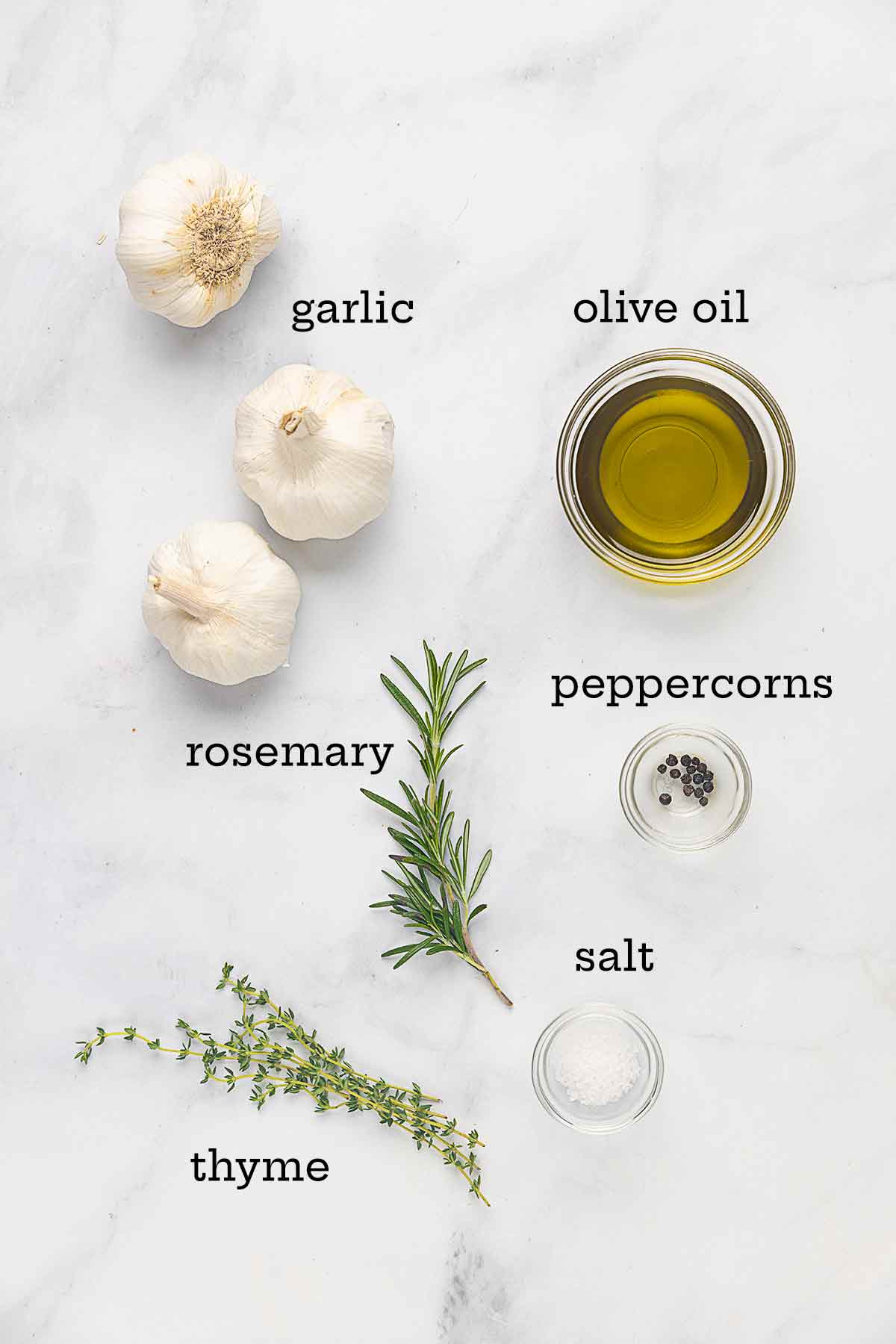
- Garlic–Look for garlic bulbs that are plump and firm that are tightly covered by the paper husks. Pass on any garlic bulbs that are soft, shriveled, have discolored spots, or have sprouts growing from the top. When separating the cloves, set aside any that are very small and save them for another use, as they may overcook in the oil. I don’t recommend using pre-peeled garlic.
- Thyme and rosemary–Use fresh herbs for making your confit. For the best flavor, choose herbs with green leaves, and avoid any that are wilted or have discolored spots on the leaves.
- Peppercorns–Use whole peppercorns for this recipe so that the oil stays clear.
How to Make Garlic Confit
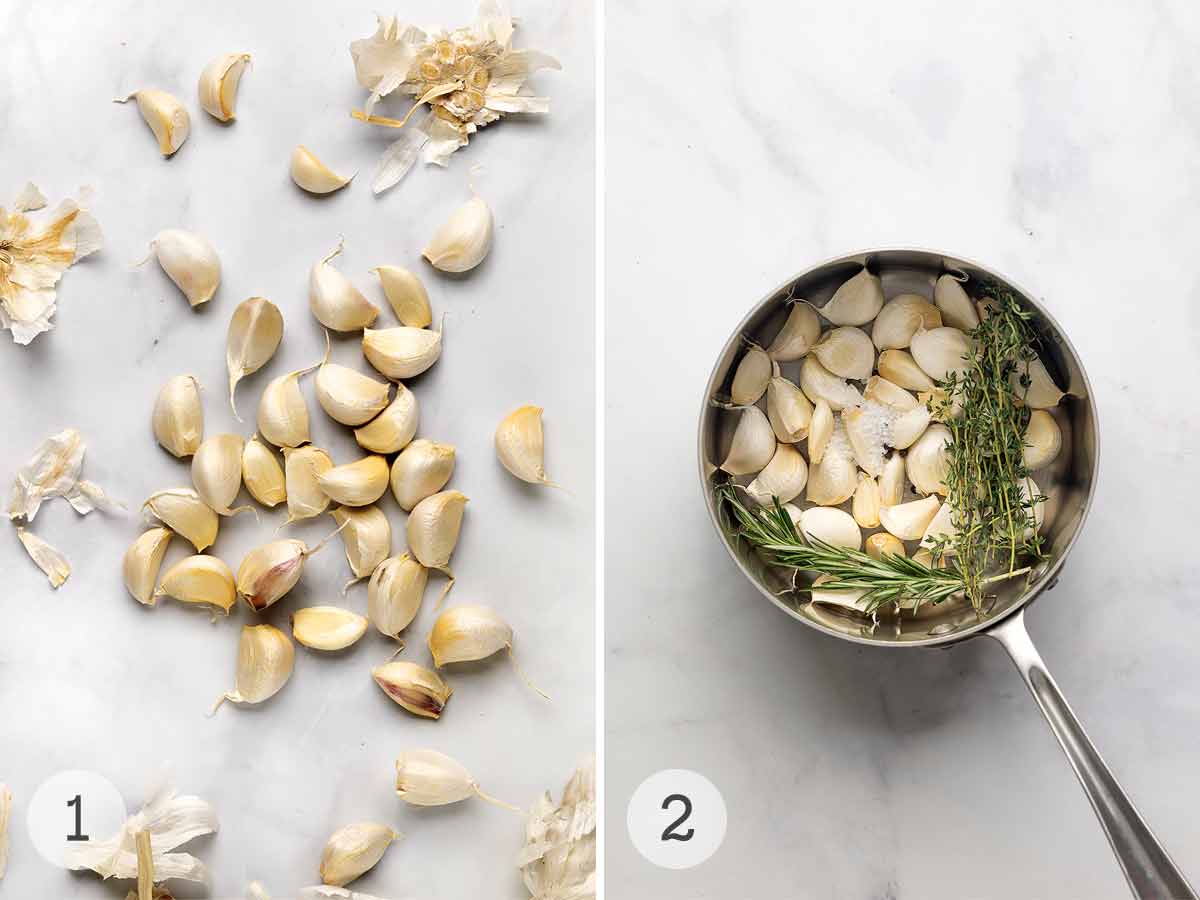
- Break the garlic heads into individual cloves, removing and discarding the papery husk.
- Place the garlic in a saucepan with the thyme, rosemary, peppercorns, and salt.
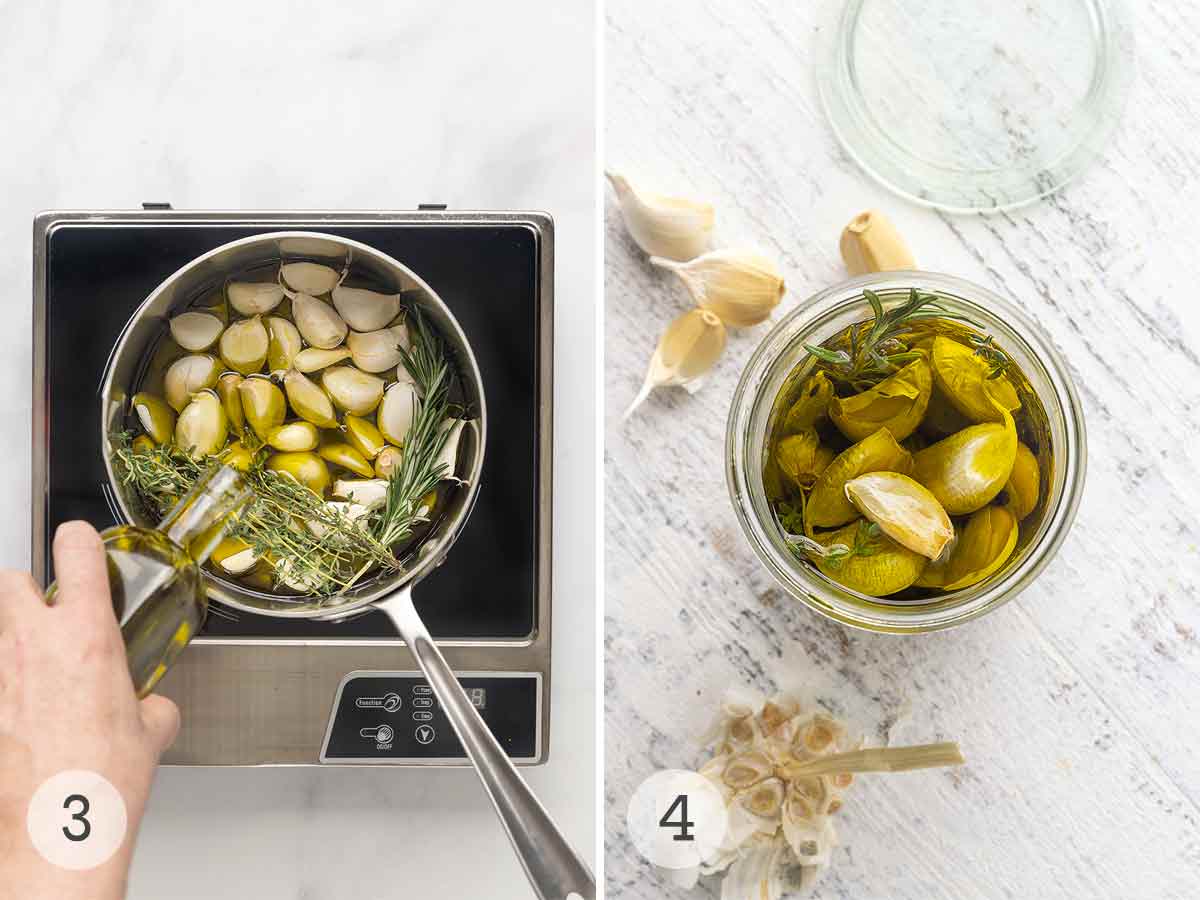
- Add enough oil to just cover the garlic. Cook the garlic over very low heat until tender. Remove from the heat and let the garlic and oil cool.
- Transfer the oil, herbs, and garlic cloves to a clean sealed jar and store in the refrigerator.
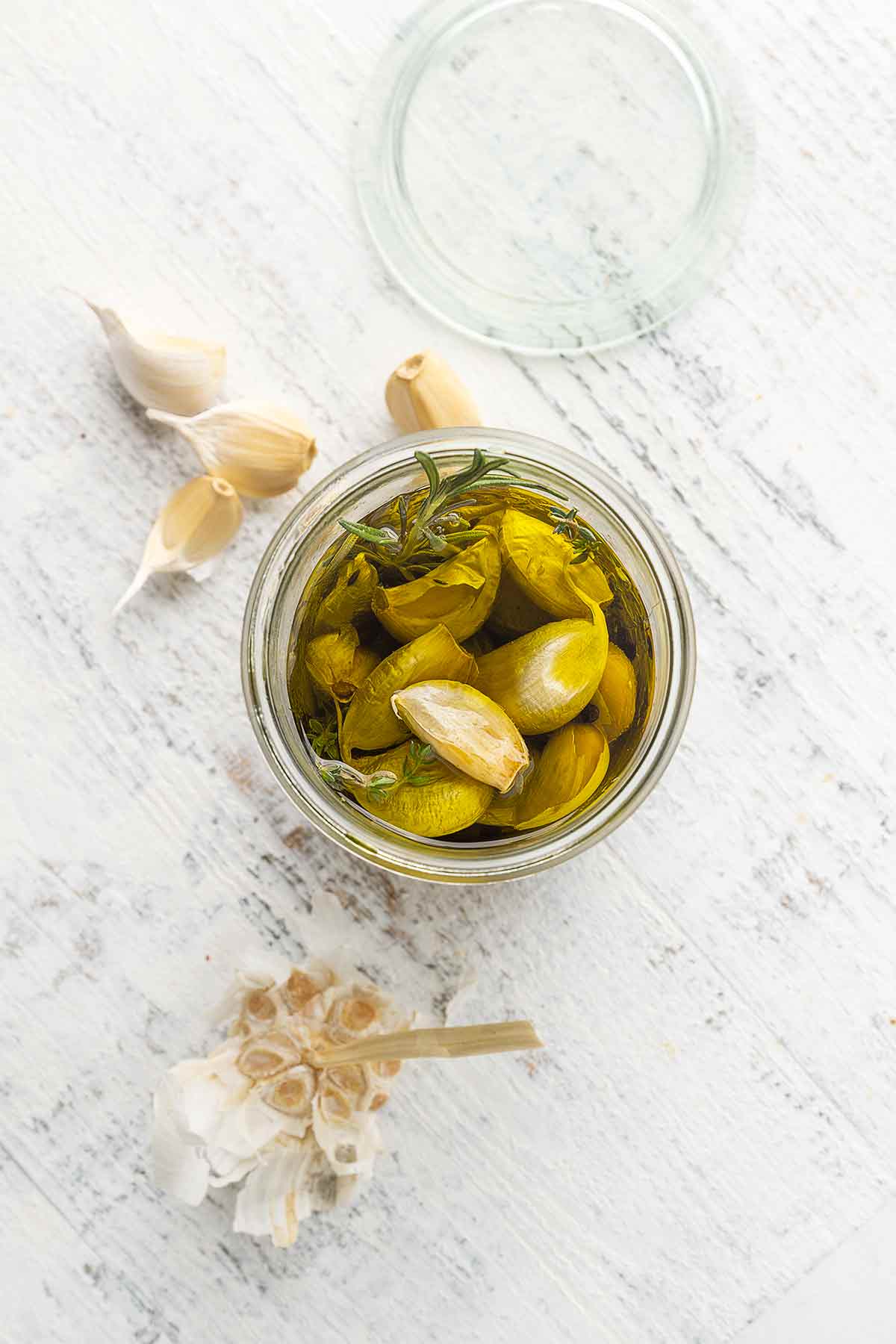
Common Questions
After slowly caramelizing in the warm oil, the raw garlic loses its pungent bite and becomes softer and more mellow, with a creamy texture and slightly sweet flavor.
If stored properly in a sealed jar in the refrigerator, and kept submerged in oil, the garlic should stay fresh and safe to eat for several weeks. Garlic that is still good should have a slightly sweet flavor, creamy texture, and pleasant odor. If there are any signs of mold, or if the garlic tastes bitter, or has a sour or rancid odor, it should be discarded.
Yes. It can be frozen for up to 3 months. For easily accessible pre-portioned amounts, freeze it in ice cube trays, then store it in a resealable freezer bag.
Pro Tips & Troubleshooting
- To prevent contamination of the confit oil, always use a fork or spoon to scoop the cloves out of the jar.
- If your oil solidifies in the fridge, scoop out the cloves or oil that you need and let it sit in a bowl at room temperature until the oil liquefies.
- This recipe is suitable for gluten-free and dairy-free diets.
Want to Save This?
Storage
Garlic confit can be stored for up to 3 weeks in a clean sealed jar in the refrigerator, or freeze it for up to 3 months. If any mold appears on the surface of the oil, it’s time to toss it out.
How to Use Garlic Confit
You can use both the cloves and garlic-infused oil in this nifty condiment in many ways.
Garlic cloves
- Schmear it onto crostini, crackers, or toasted sourdough
- Stir it into spicy marinara sauce
- Mash it into roasted garlic mashed potatoes
- Blend it into homemade hummus
- Mash with butter to make a garlic confit butter for serving over steak or grilled beef tenderloin
Confit oil
- Whisk it into a vinaigrette or creamy Italian salad dressing
- Use it for cooking vegetables, like charred broccolini or crispy greens
- Add it to this easy Greek marinade
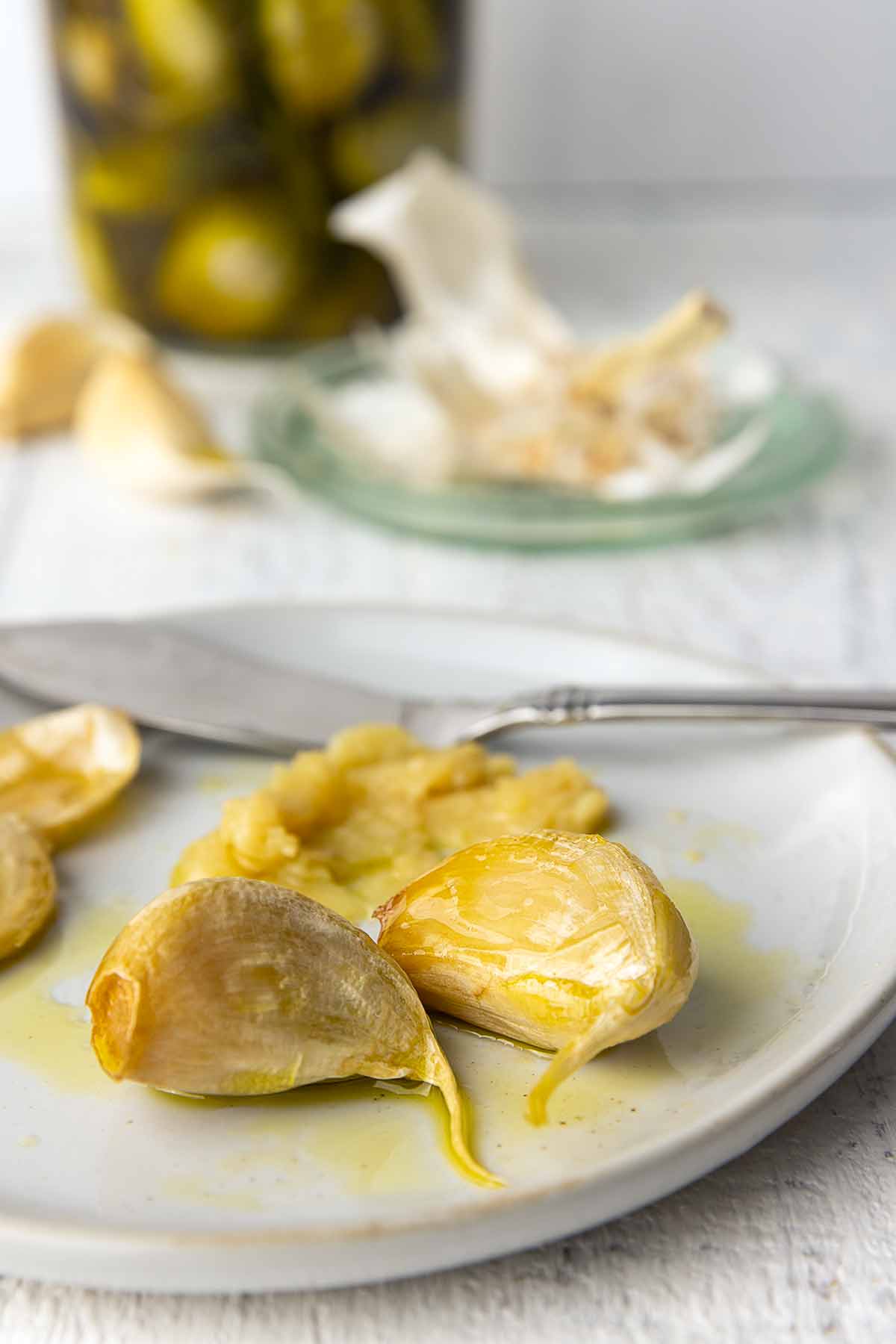
Write a Review
If you make this recipe, or any dish on LC, consider leaving a review, a star rating, and your best photo in the comments below. I love hearing from you.–David
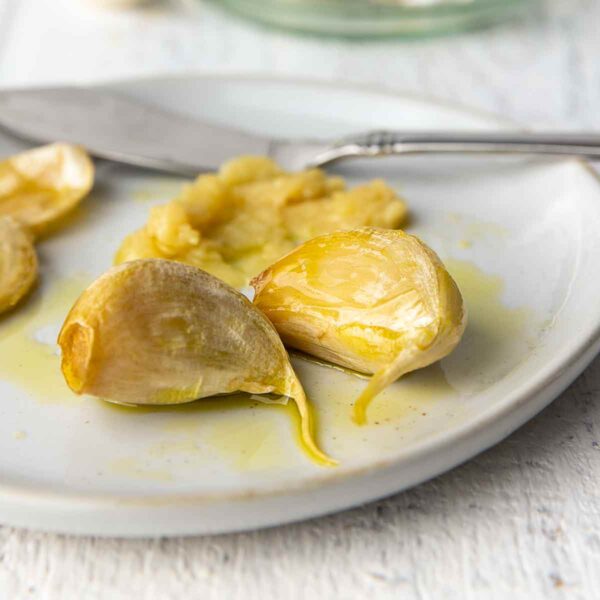
Garlic Confit
Equipment
- 1 pint jar with lid
Ingredients
- 3 heads garlic
- 3 sprigs thyme
- 2 sprigs rosemary
- 20 black peppercorns
- Big pinch salt
- Extra-virgin olive oil, (the amount will vary due to the size of the garlic cloves)
Instructions
- Break apart the garlic heads, setting aside any cloves that are smaller than the rest. Rub off the thick papery husk from each clove, but leave the tight-fitting covering intact.
- Plonk the cloves into a saucepan. Toss in the thyme, rosemary, peppercorns, and salt as well.
- Pour in just enough oil to cover the garlic, then place the pan over very low heat. Keep the oil at a mere tremble, sending up a few lazy bubbles now and then.
- Simmer until the cloves are tender, about 45 minutes. Remove the pan from the heat and let cool.
- Transfer the garlic cloves, herbs, and oil to a clean jar. Screw on the lid and keep it tightly closed in the refrigerator. The garlic confit will keep in the fridge for up to several weeks.
Notes
- Avoid contamination–To prevent contamination of the confit oil, always use a fork or spoon to scoop the cloves out of the jar.
- If it solidifies–If your oil solidifies in the fridge, scoop out the cloves or oil that you need and let it sit in a bowl at room temperature until the oil liquefies.
- Dietary–This recipe is suitable for gluten-free and dairy-free diets.
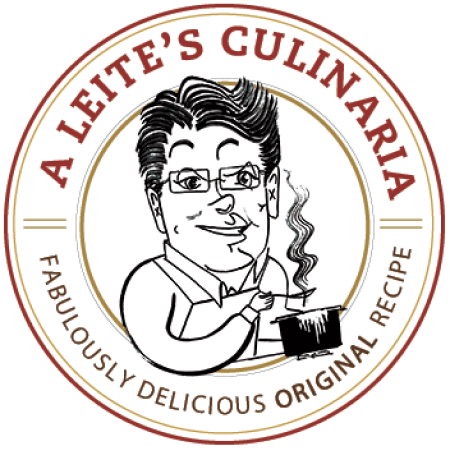
An LC Original
View More Original RecipesExplore More with AI
Nutrition
Nutrition information is automatically calculated, so should only be used as an approximation.
Recipe Testers’ Reviews
This is my new favorite garlic for spreading on a chunk of good bread or stirring into a bean spread. I’ve always been a roasted garlic fan, but truth be told, I’ve been known to scorch roasted garlic if I’m not paying attention to the timer.
This was not only just as simple—well, once the heat was properly adjusted (I’m lucky to have a low burner that actually maintains a constant low temperature)—but it cooked with little more than an occasional glance and produced better flavor. I think it was the gentler heat. I love the combination of herbs that infuses the oil and also flavors the garlic itself. A perfect pantry basic.
I’ll never not know what to do with extra garlic again! This is just as easy as making roasted garlic but without the mess. The cloves become so soft and sweet, and the flavored oil is a bonus.
I spread some cloves on toasted baguette and it was heavenly. I’ll be adding this garlic to mashed potatoes next time I make them. The oil would be delicious on a simple salad.
A chef friend of my husband also makes a confit like this; however, he also adds some dried tomatoes to the mix. I’m going to try that next time.
I will definitely make this again. I think it would make a lovely hostess gift if you used a pretty jar and tied a ribbon around it!
This confit garlic recipe was simply wonderful. It was so very easy to make, and the results were delicious, sweet, and mellow.
The garlic made its way into almost every meal for almost a week! It works perfectly as a substitute for mayonnaise and was great on toast, in sandwiches, even mixed into scrambled eggs.
This is a wonderful way to enjoy the sweet creaminess of roasted garlic. The directions are simple to follow and the cooking time is right on. Even if a few cloves are smaller than the rest, as long as you keep the burner on low, they will all cook perfectly without browning.
This method provides a huge benefit versus roasting the garlic in the oven as you now have this delicious, aromatic olive oil to use as you please. Basically, it’s a staple.
A friend of mine had given me “seconds” garlic from the local farmers’ market. I’d been thinking about trying out this garlic confit recipe, and I’m so glad that I did. It doesn’t require much effort besides pulling apart the cloves of garlic and glancing at the pot every once in a while to make sure the garlic stays at a gentle simmer.
I didn’t have any rosemary on hand, so I just doubled the amount of thyme. I’ve been using the garlic in all sorts of things: vinaigrettes, spreads, pesto, and sautéed with vegetables. I can’t wait to use up the rest of garlic and move on to cooking with the leftover oil.
The hardest part of making this garlic confit was separating and peeling the garlic and figuring out what constituted “too small.” I just went ahead and threw in all the cloves. It turns out that “too thin” might be the better descriptor, but I’m not sure.
I liked all the cloves. That is, I ate one of the ones that might have been too small, and it was fine. I threw some too thin and some too small into the pasta sauce on the stove and it was all just fine. They melted into the sauce and gave it a smooth garlic flavor.
It was difficult to keep at a simmer, but I’d just use a deeper, rather than wider, pot next time.
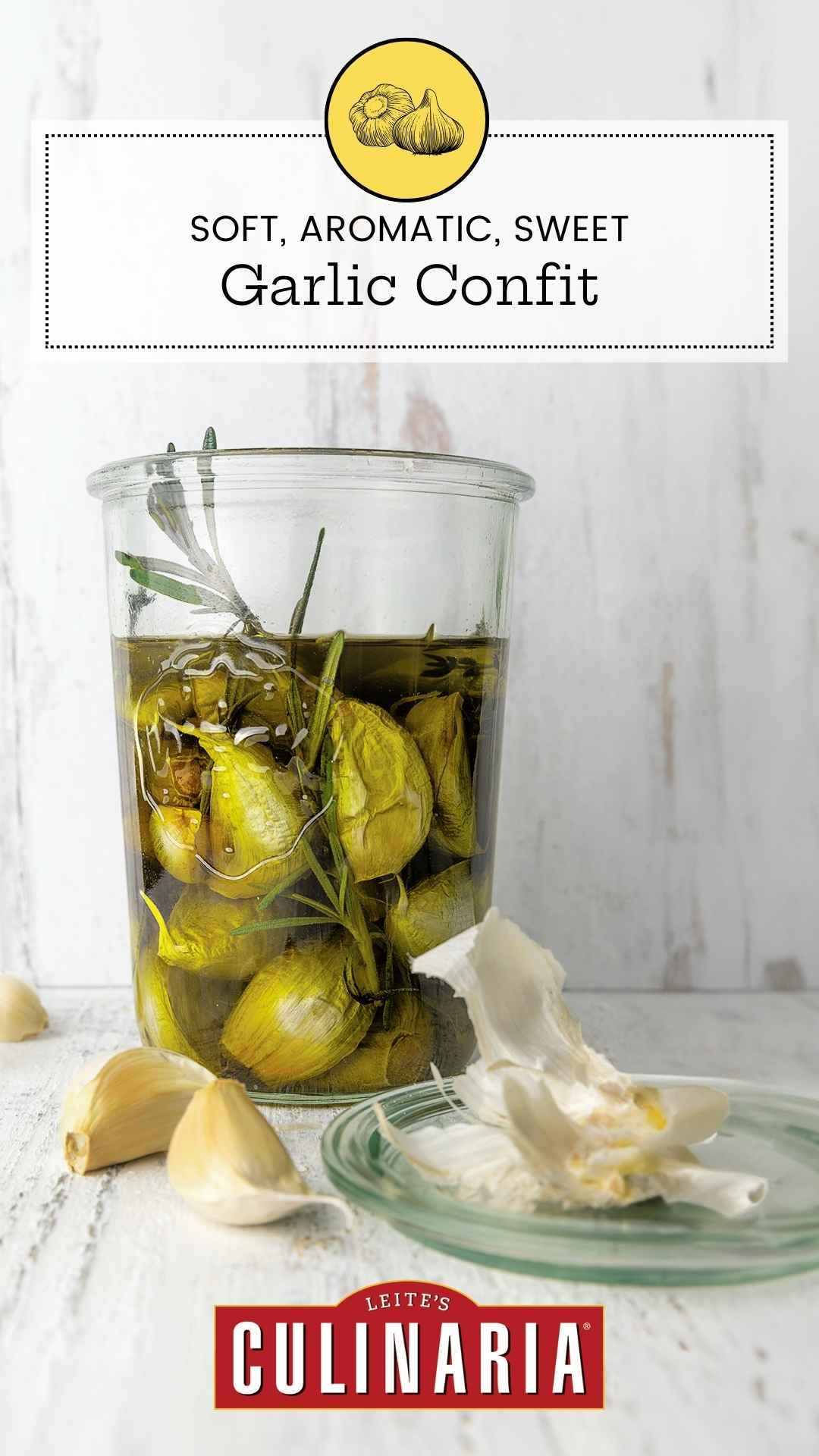
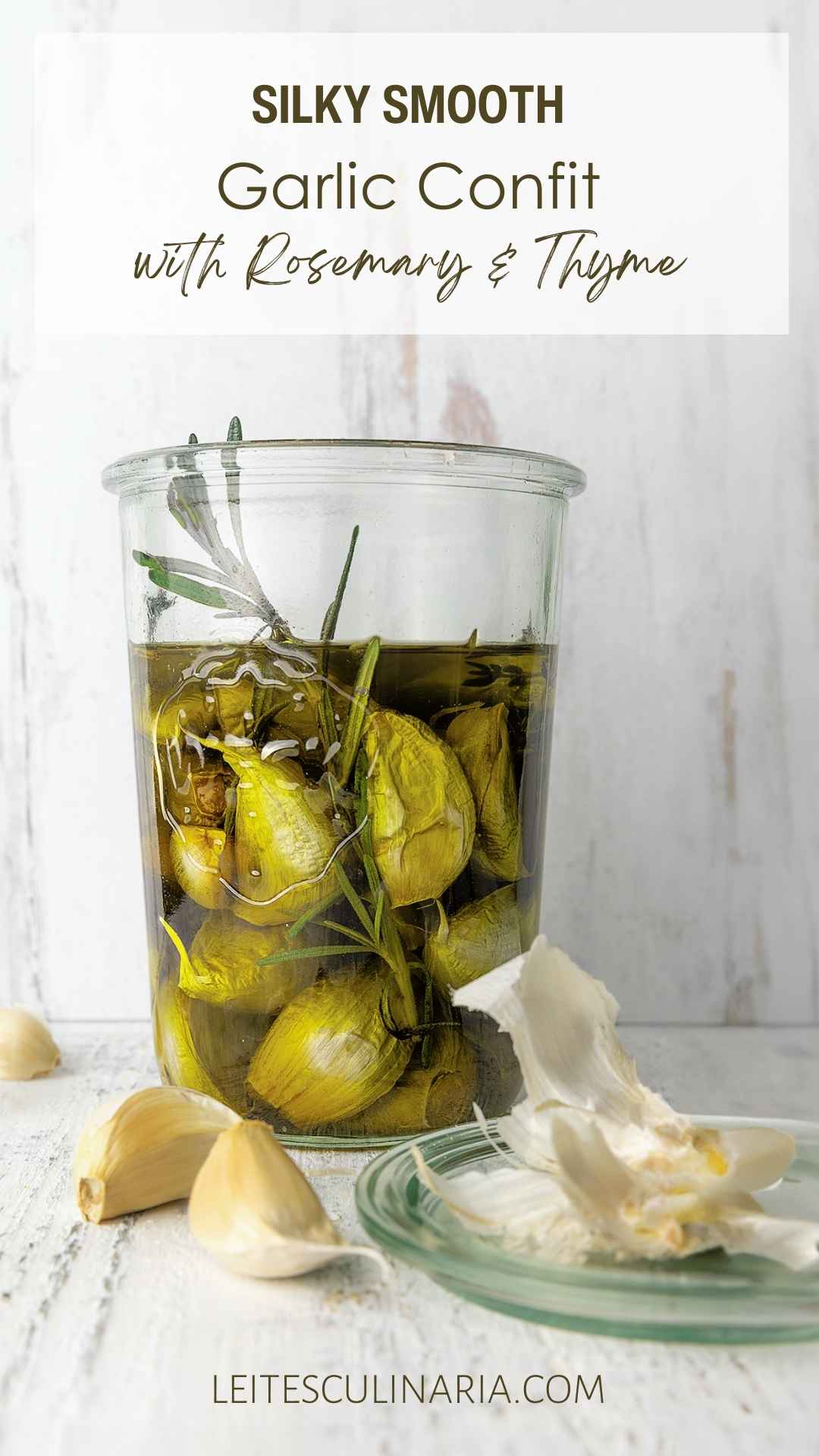
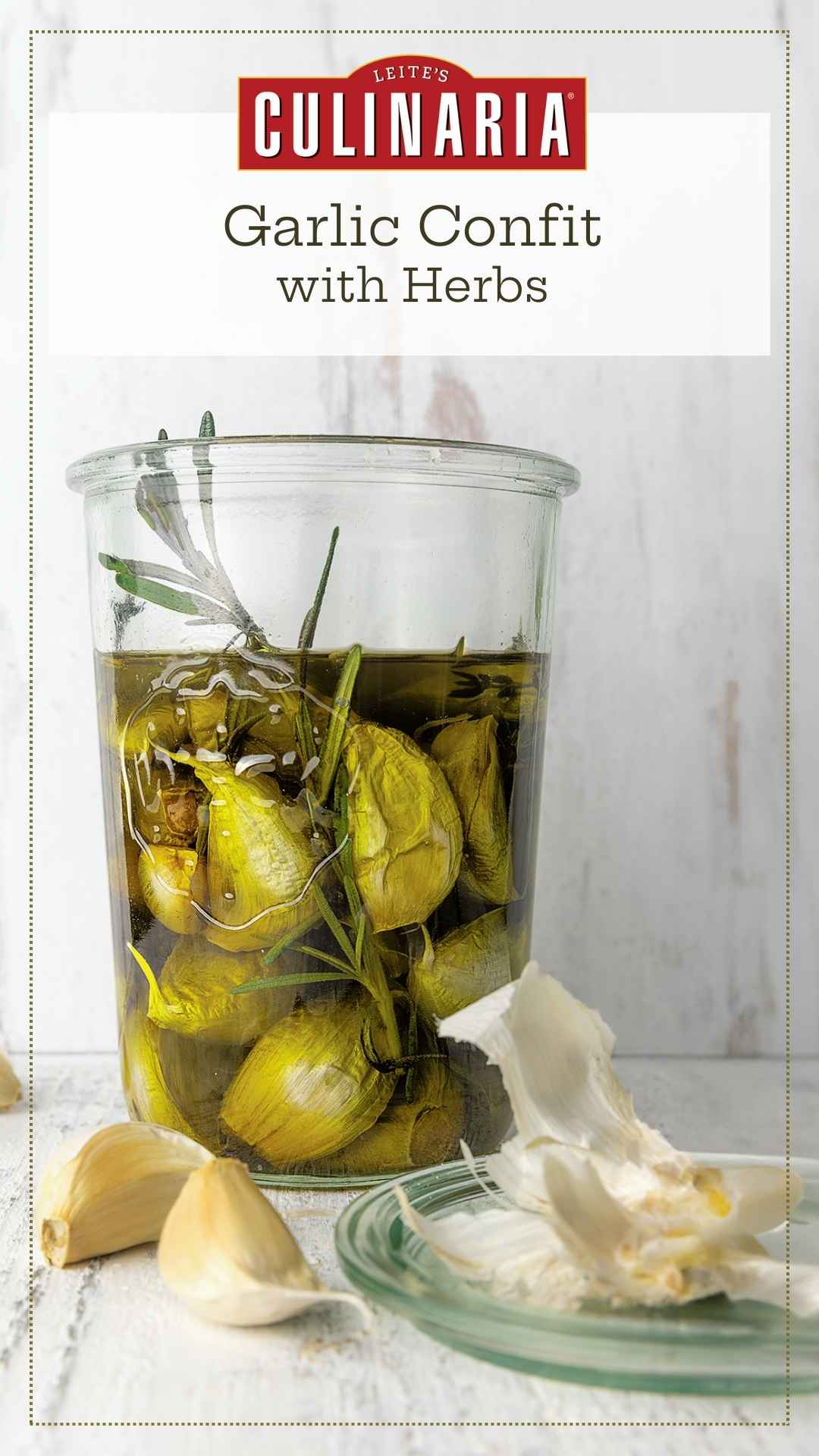
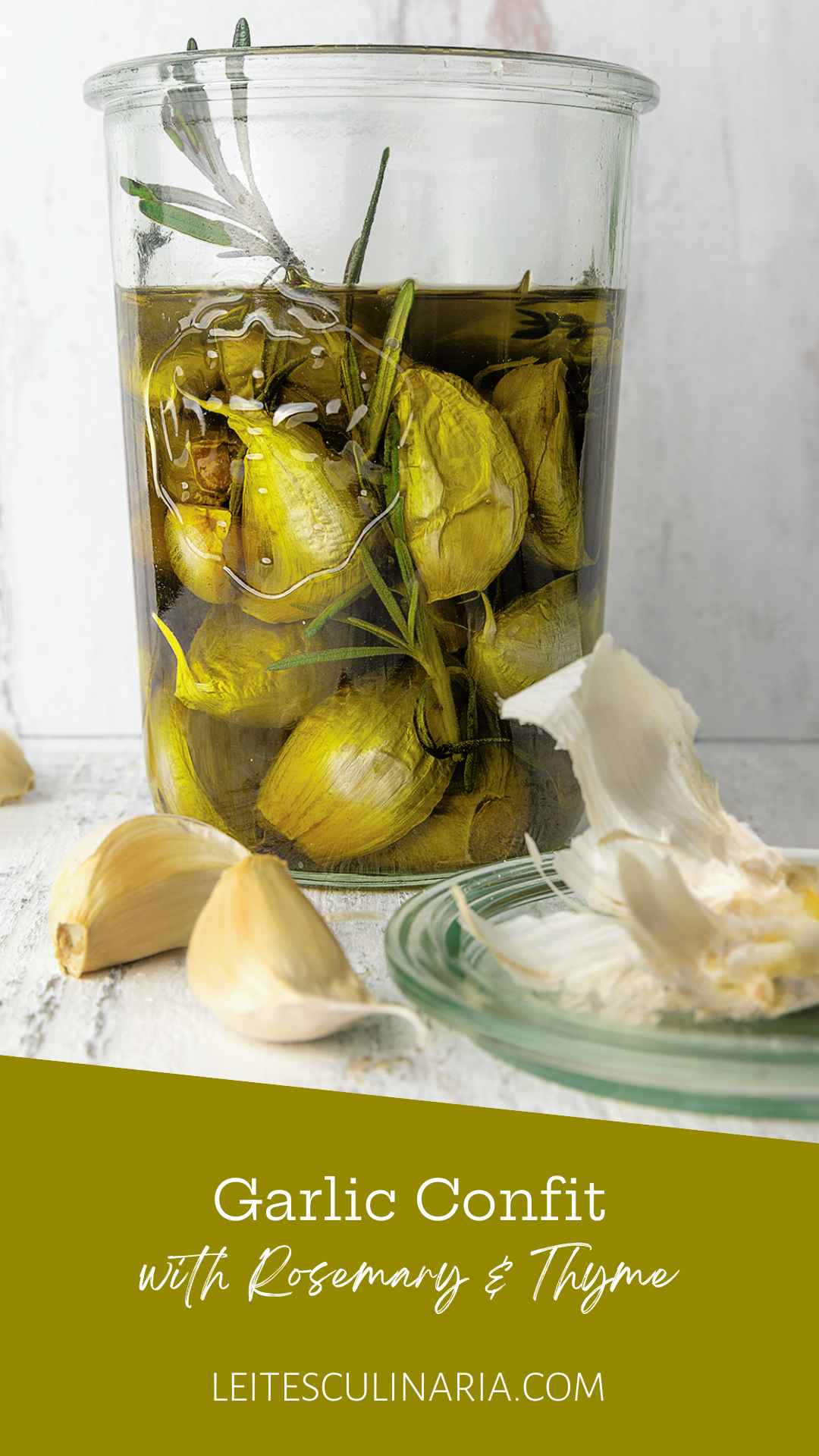
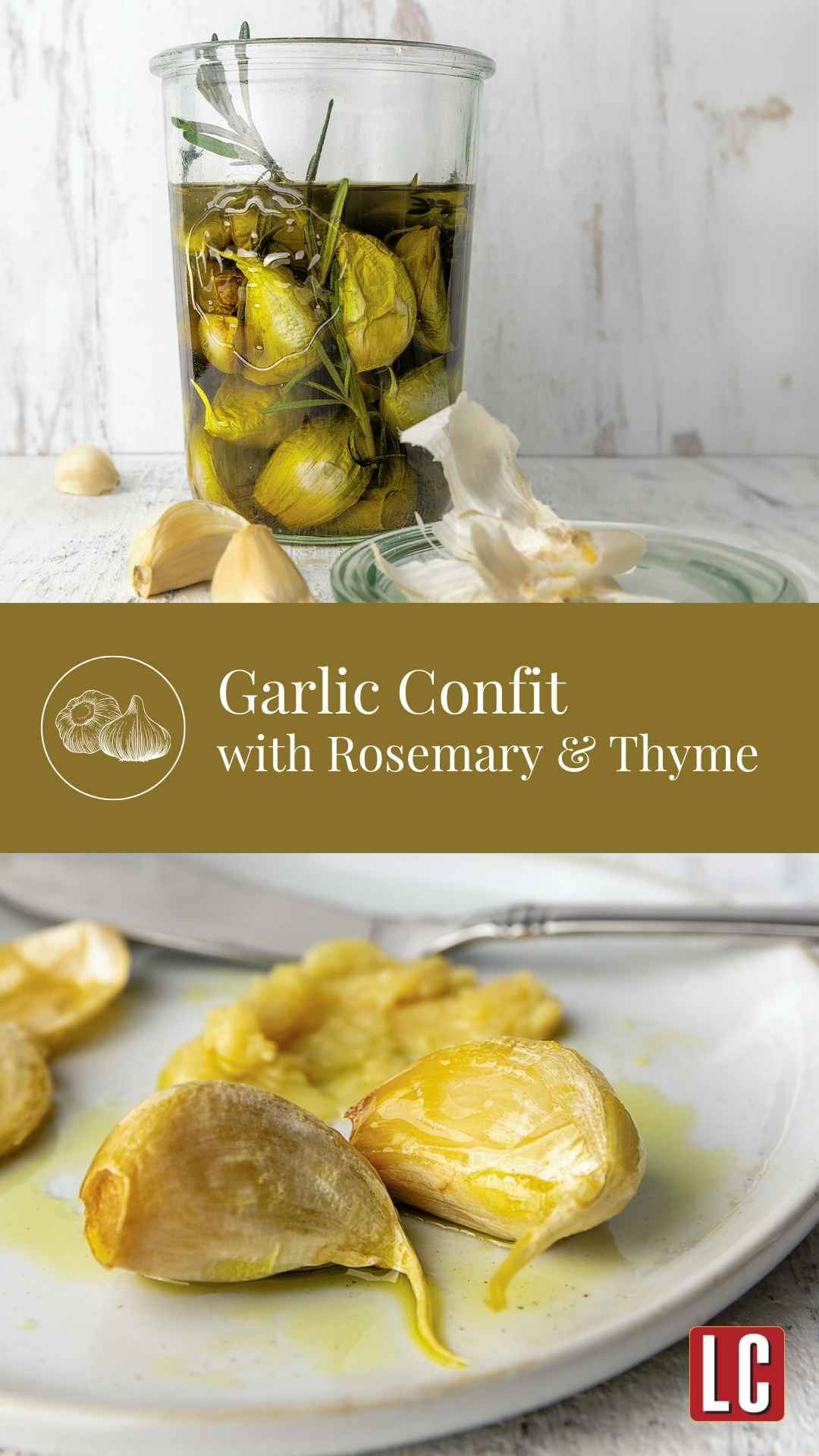
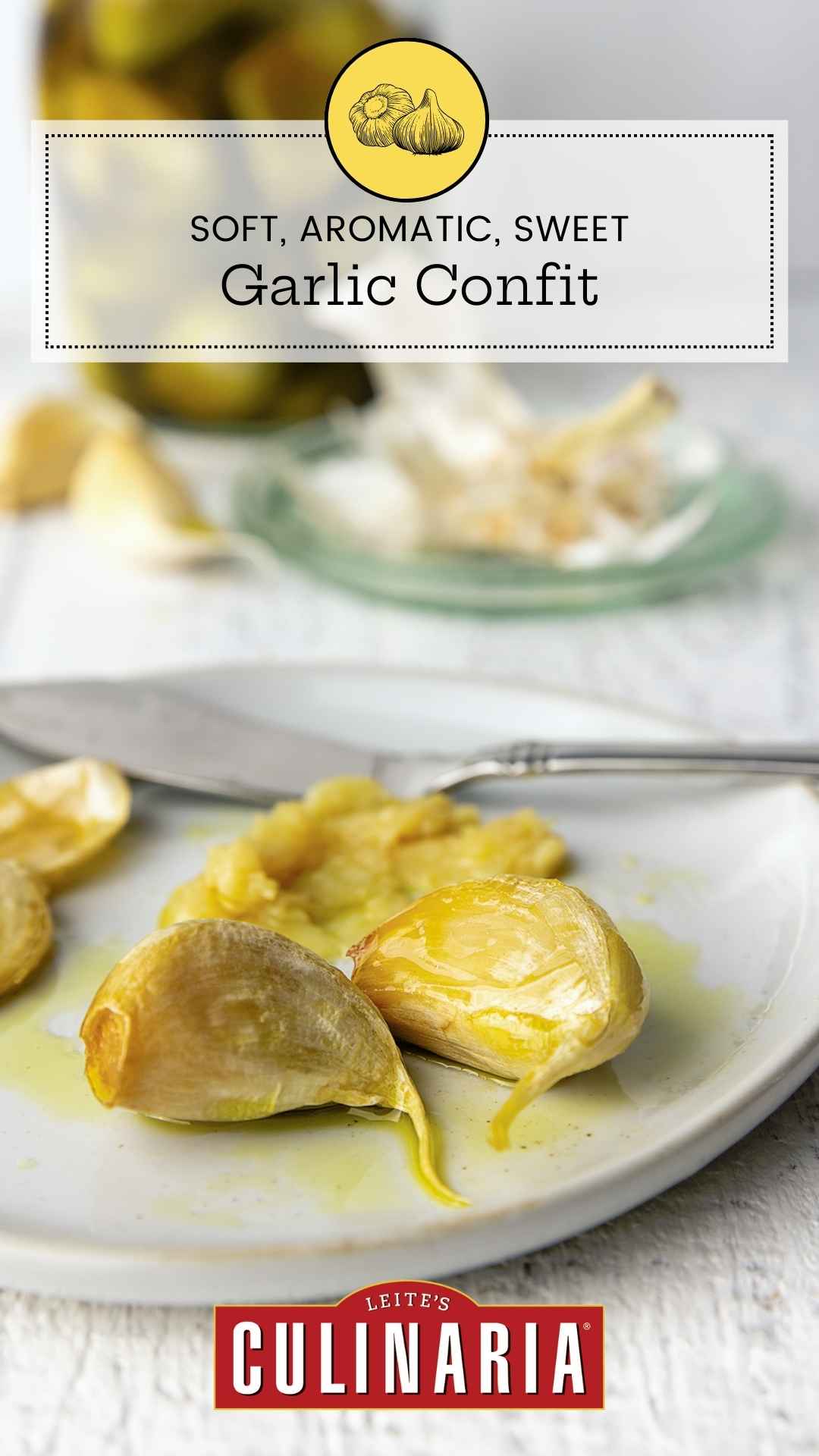
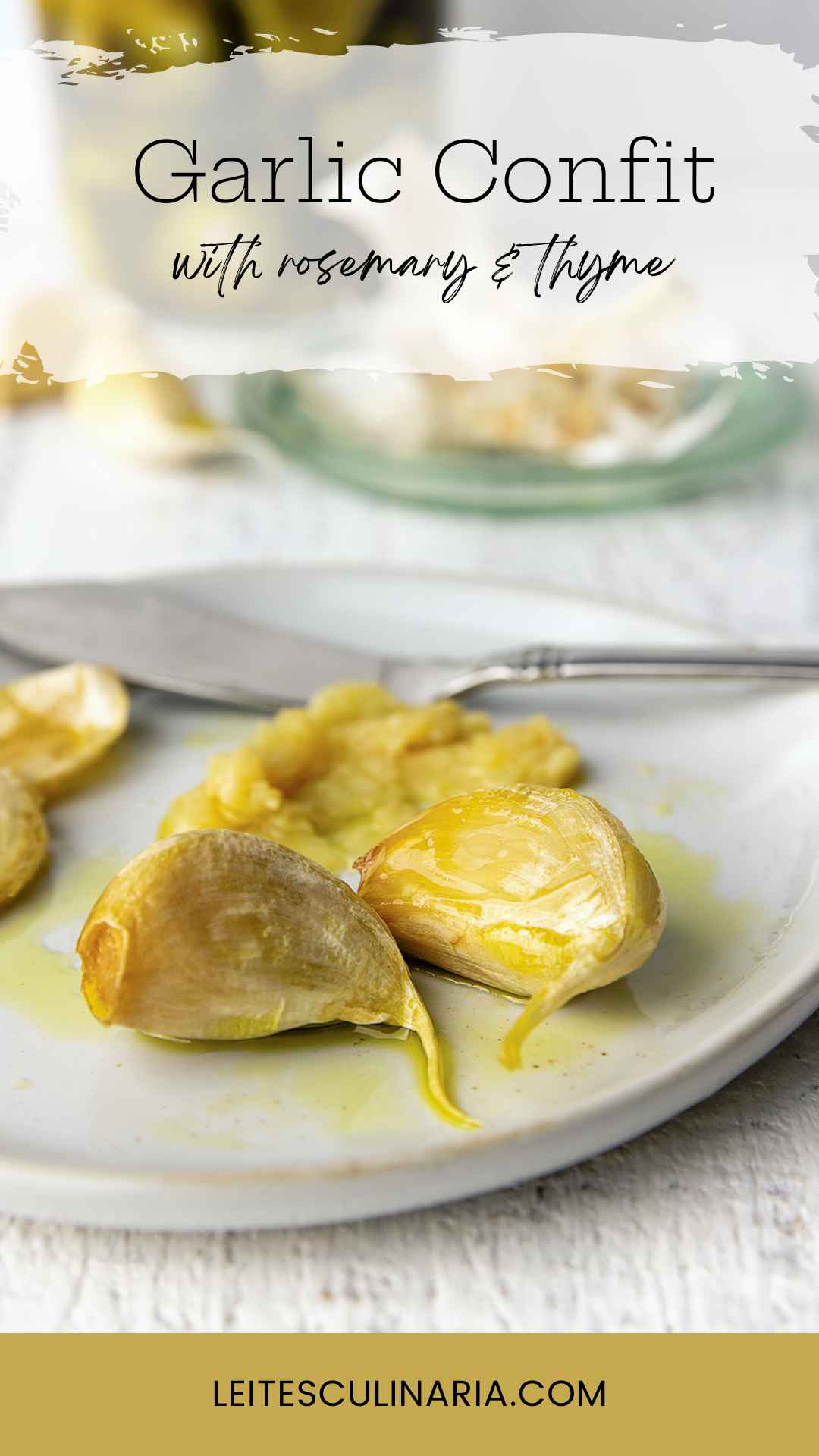
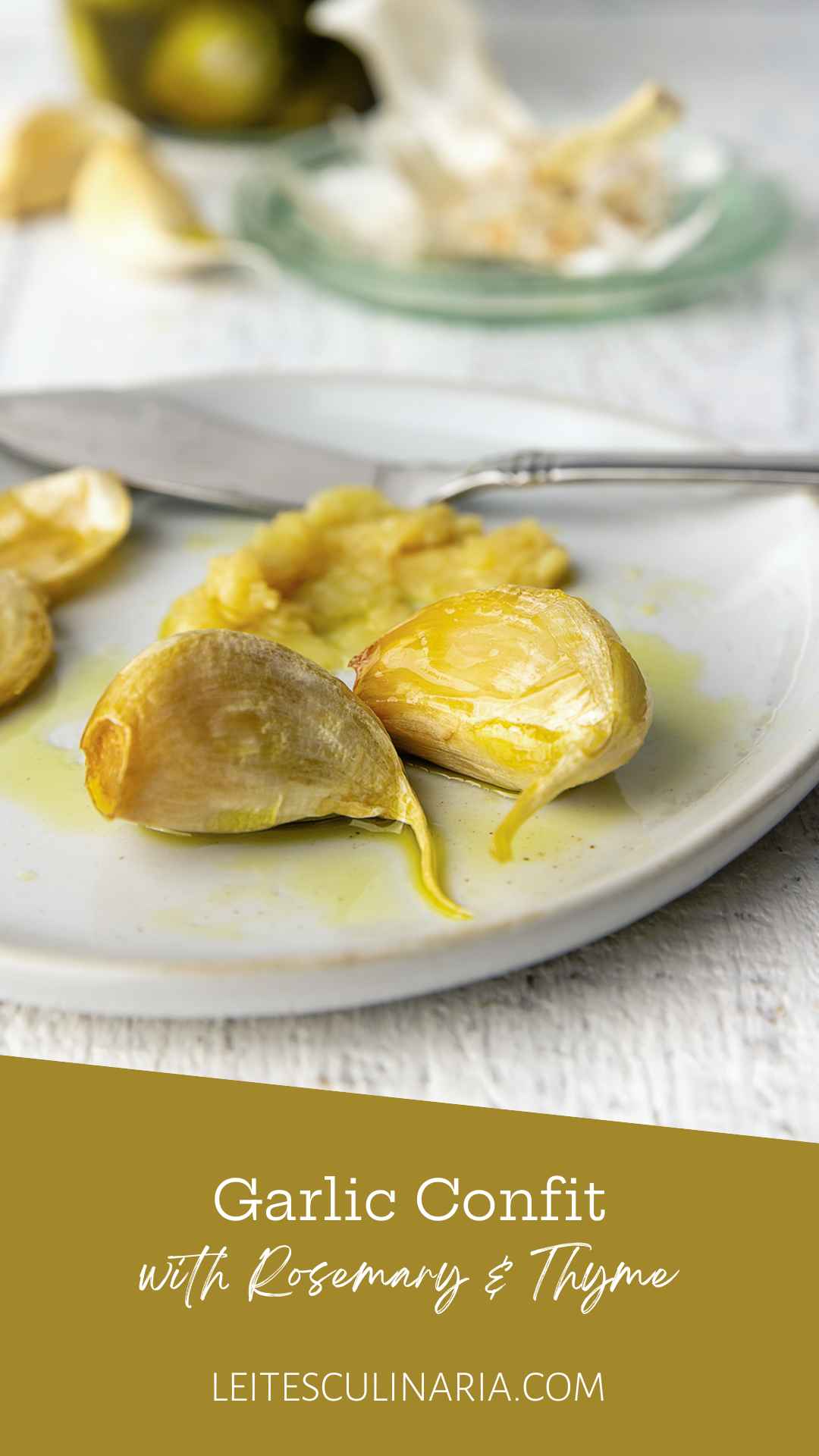

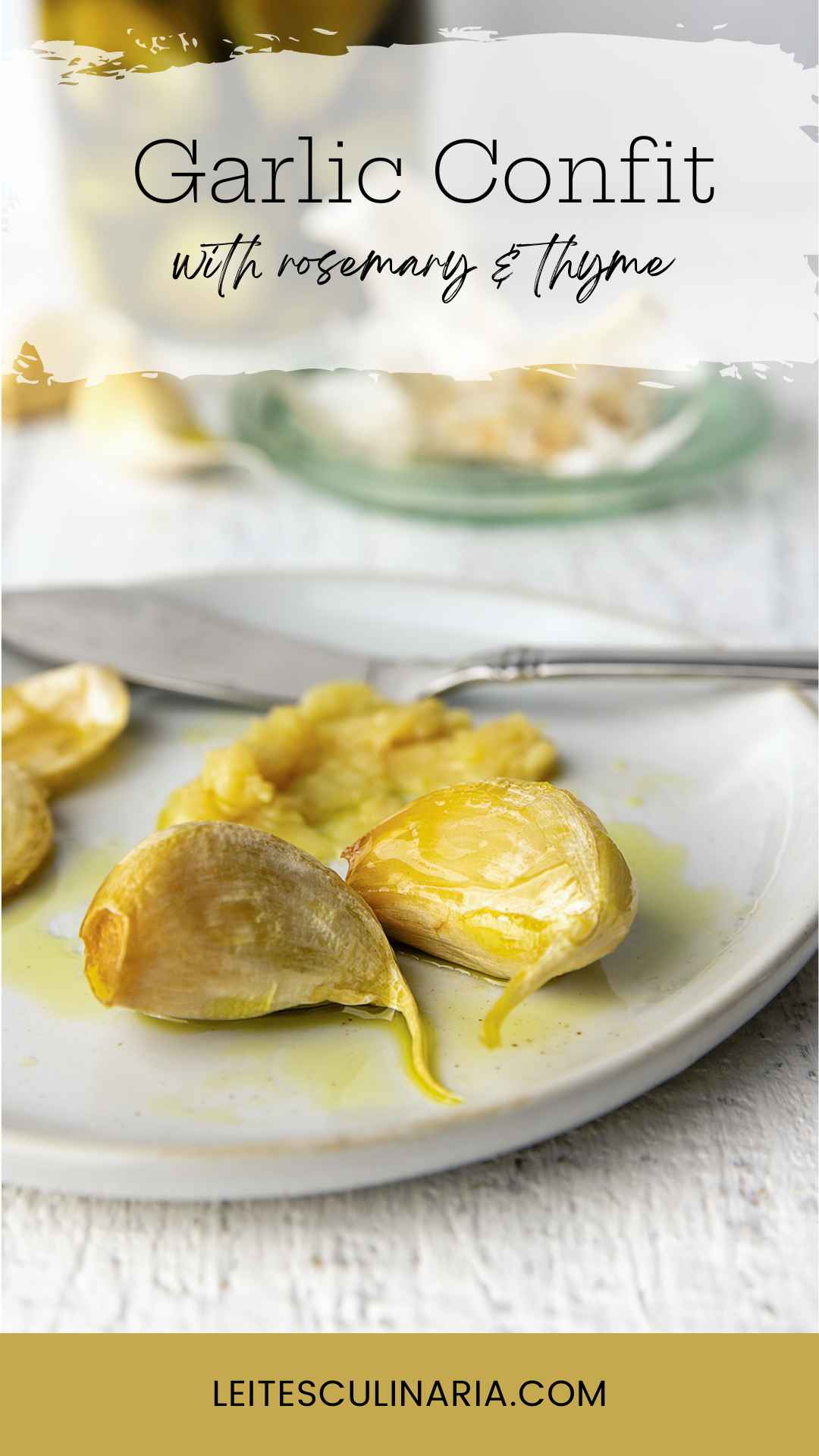
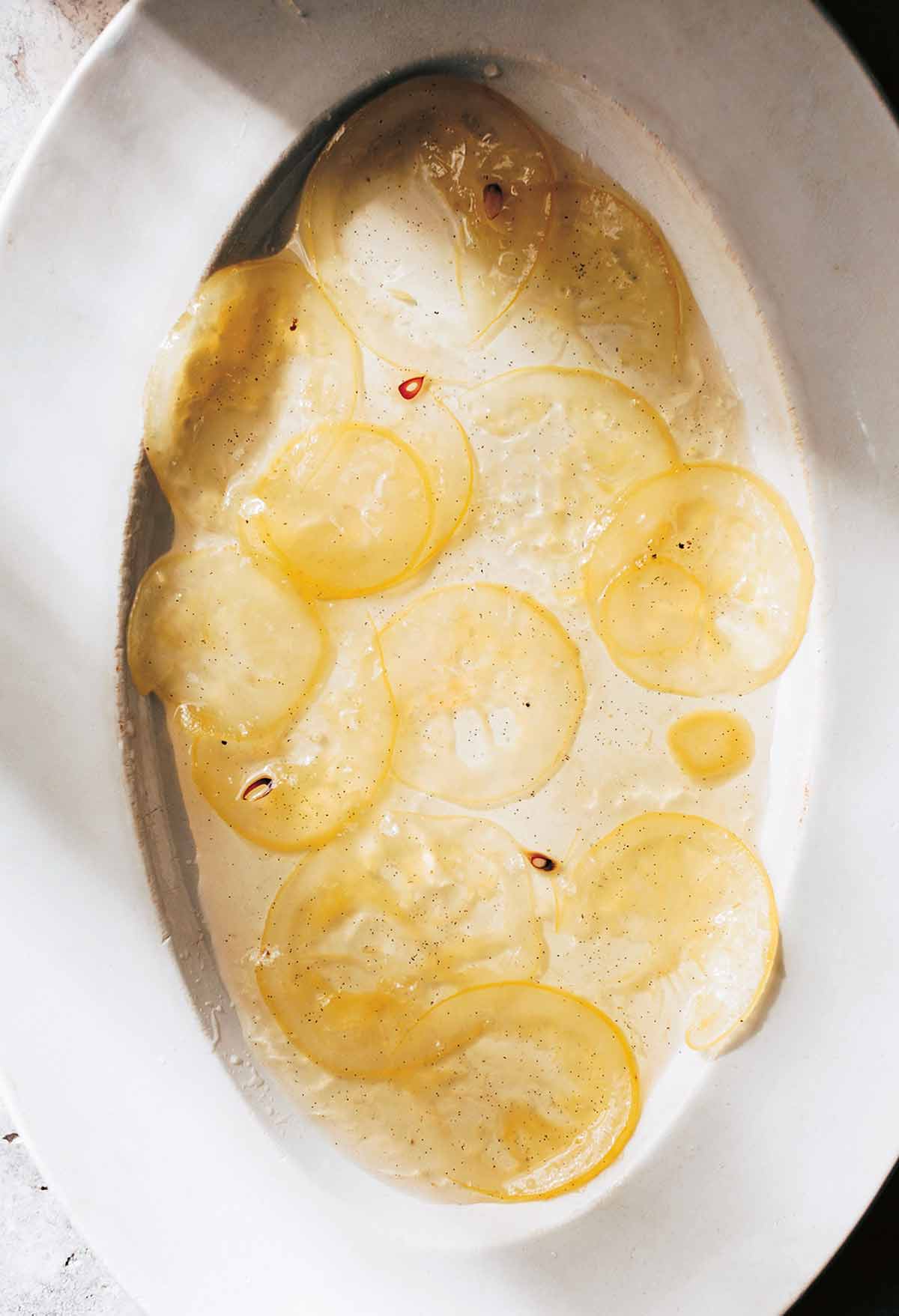
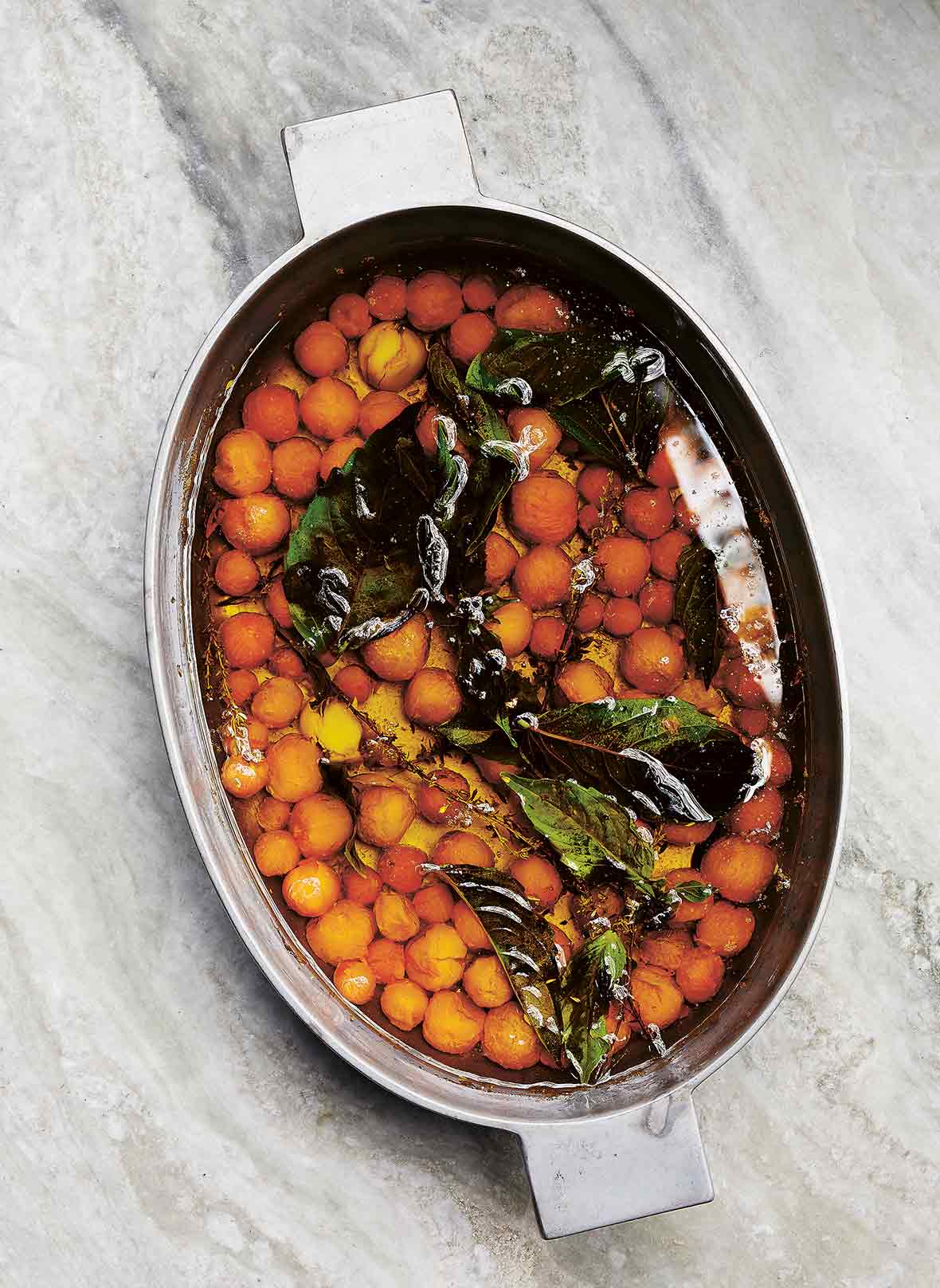
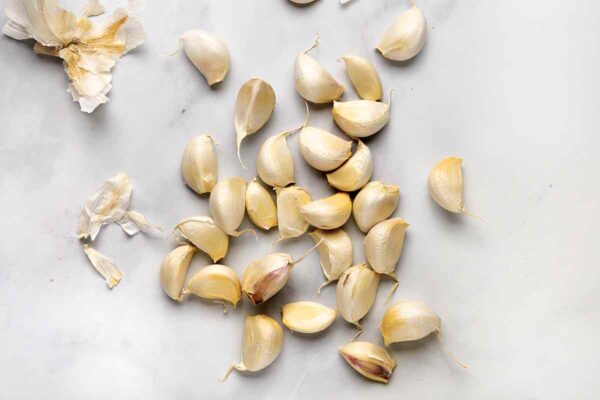
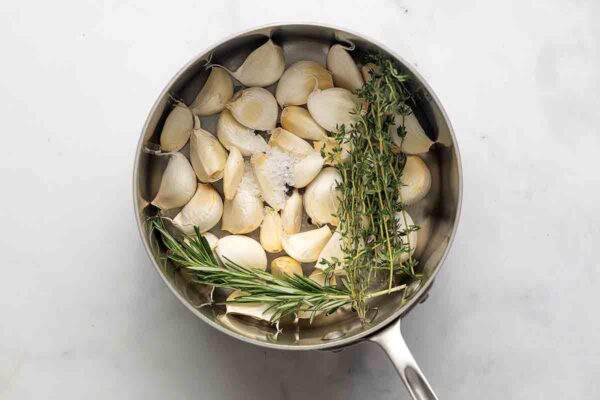
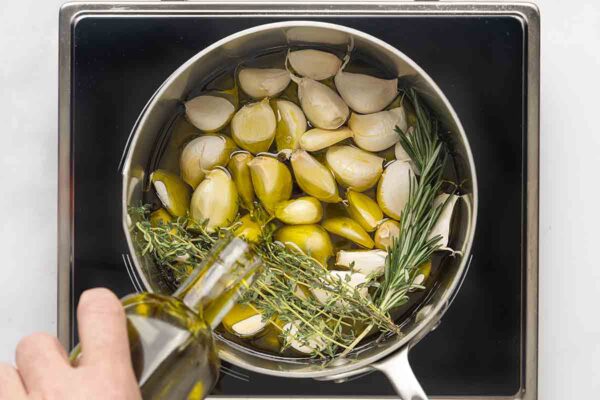
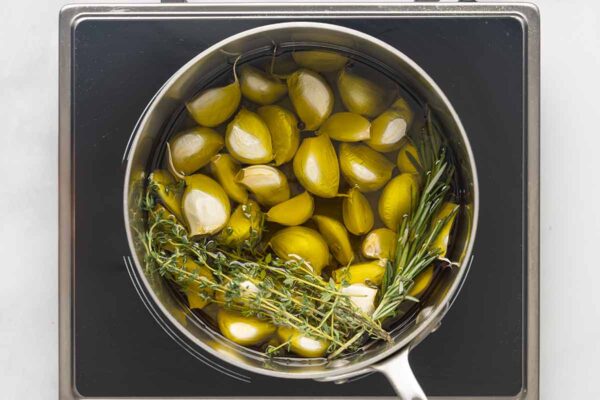
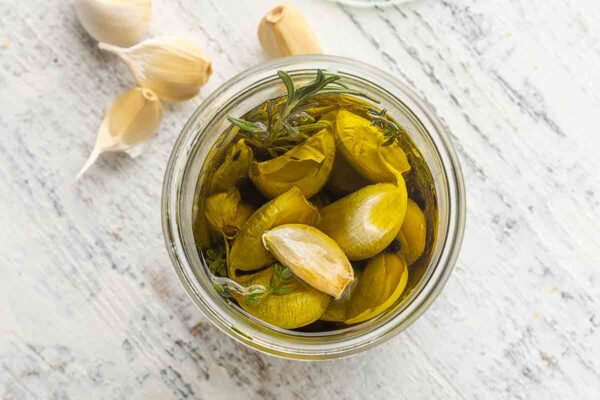













How about using sous vide and what temperature would you suggest?
lowandslow, great question—and I admire your low-and-slow instincts! Sous vide can absolutely soften garlic cloves, but here’s the catch: since there’s no oil in the bag (and no direct heat), the garlic and herbs don’t get the chance to infuse the oil. And, let’s be honest, that oil is half the magic of confit.
So while you’ll get tender cloves, you’ll miss out on that luscious, garlicky, herby oil that makes this condiment so versatile. If it’s flavor you’re after—and I have a hunch it is—I’d stick to the stovetop. Low and lazy bubbles are the way to go. But if you do decide to experiment, I’m all ears. Just promise to report back!
Re garlic confit: is it possible to do in the oven? My stovetop, even small burner on simmer, gets too darn hot! I’m thinking at maybe 175 or 200? Covered?
Bobbie, although we didn’t test the oven method, it is possible to make this in the oven. I’d recommend 250°F, uncovered, for a couple of hours. Since oven temperature can vary, you’ll need to keep an eye on it, and adjust the temperature to keep it a bare simmer, if necessary.